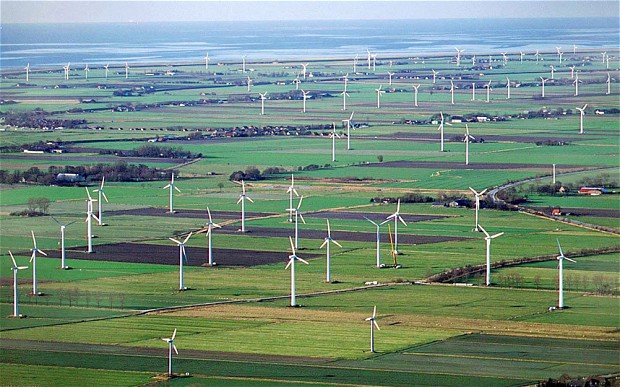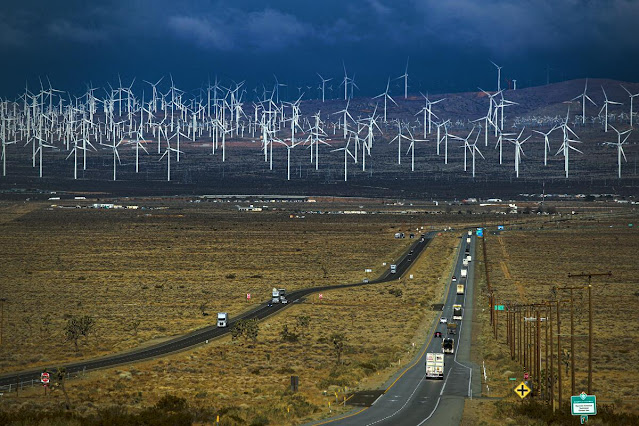The
global shift towards renewable energy is being driven by innovative
technologies and policies aimed at reducing carbon footprints and promoting
sustainable energy sources.
Here,
we explore the top 10 countries leading the renewable energy transition,
highlighting their remarkable achievements and ambitious goals.
1. Germany
Pioneering
Renewable Energy Policies
Germany
is a trailblazer in the renewable energy sector, thanks to its comprehensive Energiewende
policy. This strategy focuses on phasing out nuclear power and significantly
cutting greenhouse gas emissions. The country's ambitious goals have led to
renewable energy accounting for nearly half of its electricity consumption,
making it a leader in the global energy transition.
Key
Achievements:
Wind
Power Infrastructure:
Germany has built extensive wind power installations, particularly in the
northern regions. Offshore wind farms like Alpha Ventus and onshore turbines
are central to their renewable strategy.
Solar
PV Investments:
The country has invested heavily in solar photovoltaic systems, with regions
like Bavaria and Baden-Württemberg leading in solar power generation.
Energy
Efficiency and EVs:
Germany promotes energy efficiency measures and is transitioning to electric
vehicles, supported by a robust network of EV charging stations.
2. China
Scaling
Up Renewable Capacity
China,
the world's largest producer of renewable energy, is transforming its energy
landscape through substantial investments in solar and wind power. The
country's commitment to peaking carbon emissions before 2030 and achieving
carbon neutrality by 2060 underscores its leadership in the renewable sector.
Key
Achievements:
Wind
and Solar Installations: China leads the world in the capacity of both wind and
solar power installations, with massive solar farms in regions like Qinghai and
Gansu.
Solar
PV Manufacturing:
China is a global leader in solar PV manufacturing, driving down costs and
increasing accessibility worldwide.
Hydroelectric
Power:
Significant hydroelectric projects, such as the Three Gorges Dam, contribute to
China's renewable energy mix.
Electric
Vehicles:
China has seen rapid growth in electric vehicle adoption, supported by
government incentives and extensive charging infrastructure.
3. United States
Innovative
Technologies and Policies
The
United States has made notable strides in renewable energy through state-level
initiatives and federal incentives. The country is a leader in wind energy production
and has experienced rapid growth in solar energy installations, driven by both
private and public sector efforts.
Key
Achievements:
Wind
Energy Capacity:
The U.S. leads in wind energy capacity, particularly in states like Texas,
Iowa, and Oklahoma. Projects like the Alta Wind Energy Center highlight this
achievement.
Solar
Energy Expansion:
States like California, Nevada, and Arizona have seen significant growth in
solar energy installations, contributing to the nation's renewable energy
output.
R&D
Investments:
The U.S. is heavily investing in research and development for renewable
technologies, fostering innovation in areas like battery storage and smart
grids.
4. India
Ambitious
Renewable Energy Targets
India
is rapidly advancing its renewable energy sector with ambitious targets aimed
at achieving 175 GW of renewable energy capacity by 2022 and 450 GW by 2030.
The country focuses on solar and wind energy to sustainably meet its growing
energy demands.
Key
Achievements:
Solar
Energy Installations:
India has seen explosive growth in solar energy installations, especially in
states like Rajasthan and Gujarat. The Bhadla Solar Park is one of the largest
solar parks in the world.
Wind
Farms Development:
Large-scale wind farms in Tamil Nadu and Maharashtra are key components of
India's renewable energy strategy.
Government
Incentives:
Government policies and subsidies are driving the adoption of renewable energy,
making it more accessible and economically viable.
5. Denmark
Wind
Energy Leader
Denmark
is a global leader in wind energy, with a strong focus on both onshore and
offshore wind power. The country aims to achieve carbon neutrality by 2050 and
generate 100% of its electricity from renewable sources by 2030.
Key
Achievements:
Offshore
Wind Farms:
Denmark's offshore wind farms, such as Horns Rev and Anholt, are among the
largest and most efficient in the world.
Wind
Energy Penetration:
Denmark has a high penetration of wind energy in its national grid, often
generating more electricity from wind than its total consumption.
Innovative
Policies:
Denmark's progressive policies support renewable energy development and have
set a benchmark for other countries.
6. Spain
Harnessing
Solar and Wind Power
Spain
has made impressive progress in renewable energy, with a strong emphasis on
solar and wind power. The country aims to generate 74% of its electricity from
renewable sources by 2030, highlighting its commitment to a sustainable energy
future.
Key
Achievements:
Solar
PV Projects:
Spain's large-scale solar PV projects, particularly in regions like Andalusia
and Extremadura, are central to its renewable energy success.
Wind
Farms:
Spain boasts extensive onshore and offshore wind farms, contributing significantly
to its renewable energy mix.
Government
Support:
Strong government support and favorable policies have facilitated the growth of
renewable energy in Spain.
7. Brazil
Renewable
Energy Powerhouse
Brazil
is a major producer of renewable energy, primarily through its extensive use of
hydroelectric power. The country is also expanding its wind and solar energy
capacities, reinforcing its position as a renewable energy leader.
Key
Achievements:
Hydroelectric
Power:
Brazil's significant hydroelectric infrastructure, including the Itaipu Dam, is
a cornerstone of its renewable energy strategy.
Wind
Energy Growth:
The northeastern region of Brazil has seen rapid growth in wind energy
installations, leveraging the area's favorable wind conditions.
Solar
Investments:
Increasing investments in solar energy projects are diversifying Brazil's
renewable energy portfolio.
8. Australia
Solar
Energy Leader
Australia
is a global leader in solar energy adoption, driven by its abundant sunlight
and supportive government policies. The country is also investing in wind
energy and energy storage solutions to enhance its renewable energy
capabilities.
Key
Achievements:
Residential
Solar PV:
Australia has one of the highest rates of residential solar PV installations,
with widespread adoption across the country.
Large-Scale
Solar Farms:
Large-scale solar farms, such as the Nyngan Solar Plant, contribute
significantly to Australia's renewable energy output.
Battery
Storage and Grid Modernization: Australia is focusing on battery storage
solutions and modernizing its grid to support the integration of renewable
energy.
9. Sweden
Commitment
to Sustainability
Sweden
is committed to achieving 100% renewable electricity by 2040. The country is a
leader in bioenergy and hydropower and is making significant investments in
wind and solar energy.
Key Achievements:
Bioenergy
Use:
Sweden extensively uses bioenergy for heating and electricity, making it a key
component of its renewable energy strategy.
Wind
Farms Development:
Onshore and offshore wind farms are growing, contributing to Sweden's renewable
energy targets.
Government
Policies:
Strong government policies support renewable energy and energy efficiency,
driving Sweden's progress towards sustainability.
10. United Kingdom
Offshore
Wind Leader
The
United Kingdom is a global leader in offshore wind energy, with significant
investments in wind farms along its coastlines. The country aims to achieve
net-zero carbon emissions by 2050.
Key
Achievements:
Offshore
Wind Capacity:
The UK leads in offshore wind capacity, with projects like Hornsea and Dogger
Bank being some of the largest in the world.
Onshore
Wind and Solar Growth: The UK is also experiencing rapid growth in onshore wind
and solar energy installations.
Government
Support:
Robust government policies are supporting the transition to renewable energy,
making the UK a model for others to follow.
These
ten countries are at the forefront of the renewable energy transition, each
contributing to a more sustainable and resilient global energy system. Their
innovative policies, substantial investments, and ambitious targets are driving
the growth of renewable energy and paving the way for a cleaner future.











Comments
Post a Comment